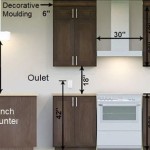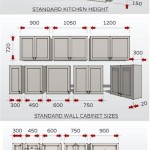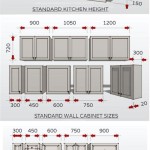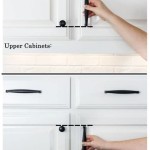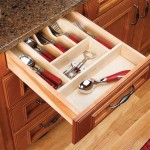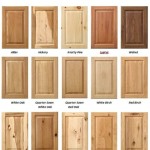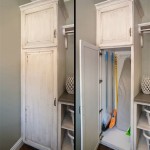Kitchen Cabinet Installation Cost
Renovating a kitchen is a significant investment, and cabinetry often represents a substantial portion of the budget. Understanding the factors influencing kitchen cabinet installation costs allows homeowners to plan effectively and avoid unexpected expenses. This article explores the various elements contributing to these costs, providing a comprehensive overview of the investment involved.
Key Factors Affecting Kitchen Cabinet Installation Costs:
Several factors contribute to the overall cost of installing kitchen cabinets. These include cabinet type, materials, size of the kitchen, labor costs, and additional features.
Cabinet Type and Material:
Cabinets are available in various types, each impacting the final cost. Stock cabinets are pre-manufactured in standard sizes and are generally the most affordable option. Semi-custom cabinets offer more flexibility in terms of size and style, falling in a mid-range price category. Custom cabinets are built to exact specifications, offering the highest level of customization but also the highest cost. Material selection also plays a significant role. Solid wood cabinets are typically more expensive than laminate or particleboard options. Hardware choices, such as hinges and handles, further contribute to the overall expense.
Kitchen Size and Layout:
The size of the kitchen directly influences the number of cabinets required, thus impacting the overall cost. Larger kitchens necessitate more cabinets, increasing both material and labor expenses. The kitchen layout also plays a role. Complex layouts with intricate corner cabinets or unique configurations may require specialized installation techniques, adding to the labor costs.
Labor Costs:
Installation labor represents a significant portion of the total project cost. Experienced installers typically charge higher rates, but their expertise can ensure a professional and efficient installation, potentially saving money in the long run by avoiding costly mistakes. Geographic location also influences labor rates, with higher costs prevalent in metropolitan areas. The complexity of the installation itself, including any necessary demolition or modifications, also affects labor costs.
Additional Features and Accessories:
Features like decorative moldings, glass doors, built-in organizers, and specialized lighting contribute to the overall cost. These additions enhance the functionality and aesthetics of the kitchen but come at an additional expense. Integrating appliances into the cabinetry design also adds to the project’s complexity and cost.
Cost Breakdown:
Understanding a typical cost breakdown can assist in budget planning. While prices vary based on the factors discussed, a general framework can be helpful. Material costs for cabinets typically comprise the largest portion, followed by labor, then additional features and accessories. Demolition and disposal costs, if required, are often factored in separately.
Obtaining Accurate Cost Estimates:
Obtaining accurate cost estimates is crucial for effective budget management. Consulting with reputable cabinet installers and obtaining multiple quotes is recommended. Providing detailed information about the desired cabinet type, materials, kitchen size, and desired features ensures accurate estimates. Clearly outlining the scope of work, including demolition, disposal, and any necessary modifications, helps avoid discrepancies and unexpected costs later in the project.
Budgeting and Financing Options:
Careful budgeting is essential when planning a kitchen cabinet installation. Setting a realistic budget and exploring various financing options can help manage the expenses. Considering the long-term value added to the home by a well-planned and executed kitchen renovation can help justify the investment.
Project Timeline and Scheduling:
Understanding the project timeline is crucial for minimizing disruption to daily life. Lead times for cabinet orders can vary, especially for custom or semi-custom options. Coordinating the installation schedule with other contractors, such as electricians and plumbers, is vital for a smooth and efficient renovation process. Delays in any part of the project can impact the overall timeline and potentially incur additional costs.
Working with Contractors:
Selecting a qualified and reputable contractor is paramount for a successful kitchen cabinet installation. Verifying contractor licenses and insurance is essential. Checking references and reviewing previous projects can provide valuable insights into the contractor's workmanship and reliability. Clear communication with the contractor throughout the project is crucial for addressing any concerns and ensuring the project stays on track and within budget.
Permitting and Regulations:
Depending on the scope of the project, building permits may be required. Understanding local building codes and regulations is essential for ensuring compliance. Contractors can often assist with navigating the permitting process, but it's important to be aware of the requirements and associated costs.
Post-Installation Considerations:
After installation, proper care and maintenance are essential for preserving the longevity of the cabinets. Cleaning the cabinets regularly with appropriate cleaning products helps maintain their appearance. Addressing any minor issues promptly can prevent larger problems from developing. Understanding warranty information and procedures is important for addressing any potential defects or issues that may arise after installation.

How Much Does It Cost To Install Kitchen Cabinets Az Cabinet Company

How Much Do Custom Cabinets Cost

How Much Does Cabinet Installation Cost New 2024 S

Kitchen Cabinets Costs 2024 Data Angi

What Is The Average Kitchen Cabinet Cost

What Is The Average For A Murrieta Temecula Kitchen Remodel In 2024

Cost To Install Kitchen Cabinets The Home Depot

What Do Kitchen Cabinets Cost Tips To Stay In Budget

Average Cost To Replace Cabinets Forbes Home

Kitchen Cabinet Installation Costs
Related Posts

